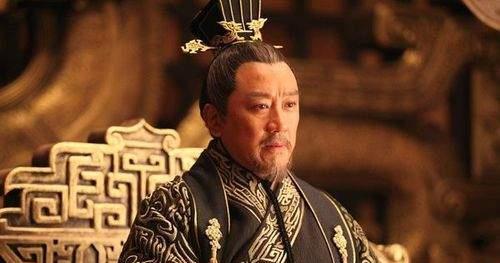During the Spring and Autumn Period and the Warring States Period, people used a shell currency as a medium of exchange, but you may not know that the most precious shell currency at that time was actually "copper-clad gold coins", but unfortunately there are too few in existence today, almost becoming a priceless treasure. What's going on here? If you want to know, let Xiaobian reveal the secret for you:

The Spring and Autumn Period and the Warring States Period was the most chaotic period in the history of the mainland, when the princes were divided into one side, and the central government could no longer control it, resulting in the fall of power and the attacks of those who had power. Of course, the frequency of wars did not affect the economic development of various countries, and each princely country had a set of economic policies suitable for its own domestic production and living conditions, but on the same road, all countries invariably chose the same special currency - shell coins.
Shell coins are currency made of shells? Of course, the reason why the ancients chose shells as currency was definitely not a hot idea, but a perfect summary of the experience of production and life. Compared with the land area of today's China, the ancient Central Plains ruled areas were small and rarely existed in the coastal areas, so there were not many channels for obtaining shells, and naturally, shell coins themselves were scarce. More importantly, the shell coin itself is beautiful and durable, and it is also easy to preserve and carry, which is the most competitive form of currency at that time. Speaking of which, we have to mention that not only on the mainland, but also in the world for many years, the peoples have also had a history of using shells as currency.
The great revolutionary teacher Marx once said, "All inferences that do not take into account the historical context and specific conditions are metaphysical assertions, static, one-sided, and even more undesirable." Although there are many advantages of shell currency, its advantages are limited to the Shang and Zhou Dynasties when the productivity is not developed, when there is a greater leap in bronze smelting technology, the advantages of shell currency no longer exist. Compared with bronze coins, shell coins appear to be more bulky and fragile, and their specifications are uncontrollable and cannot meet the increasingly developing commercial requirements.
In order to strengthen the control of the economy, coupled with the sharp increase in the number of people and the consequent increase in the demand for money, the natural shell currency has faced a crisis of serious shortage, so the imitation shell coin has come into being. According to archaeological records, the raw materials for the production of shell coins that appeared at that time were stone, bone, mussels, pottery, and of course, there were many metal imitations.
At this time, some readers may wonder, what is the most precious shell coin in history? The answer is simple, it's copper-clad gold coins.
As the name suggests, a copper-clad gold coin is a shell coin made of copper and then coated with a layer of gold on the bread. Just as the so-called "things are rare and expensive", the amount of copper-clad gold coins is very small, which is also extremely precious. As for why copper-clad gold coins have become scarce cultural relics, there are three main reasons.
The first point is the high price of copper-clad gold coins. As we all know, for the copper-clad gold coin currency, ordinary people are absolutely not eligible to use, after all, the daily expenses of the people are extremely low, it is impossible to contact the bulk currency, so the use of copper-clad gold coins are mostly royalty or nobles. It is also for this reason that the number of copper-clad gold coins will not be too large, so that the amount of copper-clad gold coins will be less passed on to future generations.
The second point lies in the properties of the copper-clad gold coins themselves. Both bronze and shells can naturally corrode themselves, as can copper-clad gold coins. Once the copper-clad gold coin is placed in the natural environment, the gold leaf on its surface will fall off from the body, which will then cause a lot of corrosion to the bronze surface.
The third point lies in the habits of the ancients. In ancient times, there was no bank, and the appearance of the money house was also in the late Ming and early Qing dynasties, so people at that time in order to prevent thieves, often buried money in the ground, so that the shell coin will definitely become a member of the buried, whether it is natural destruction or complete disappearance, it will lead to less and less shell coins.
Speaking of this, what we need to say is that we hope that archaeologists can work harder and find more copper-clad coins, and then enrich the variety of ancient money and cultural relics, but also open our eyes.
References: "The Soul of Huaxia" by Lei Wu published by Shaanxi Ancient Books Publishing House
Wen xiucai, editor-in-chief of Wenlan Hairun Studio, written by: Special history writer: Changshan Zhao Zi worm